Plan E for Echo
Day 6 – 07 January 2023
A message from the tannoy announcing the fifth potential landing site nicely sums up the weather in the early part of today. Shifting ice at Orne Harbour (off the Gerlache Strait) blocked any chance of getting on shore (and seeing chinstrap penguins up close), and similar issues scuppered alternative plans B through D. Meanwhile the early mammal surveys were forced off the upper deck by sleet and high winds and took cover on the window-covered deck below. At one stage the whole ship had heeled over to starboard as a result of those same winds. The first break in the metaphorical clouds came with the sighting of a snow petrel by the early morning bird team, an unexpected but welcome sight in the gale. The first break in the literal clouds wasn’t until much later.
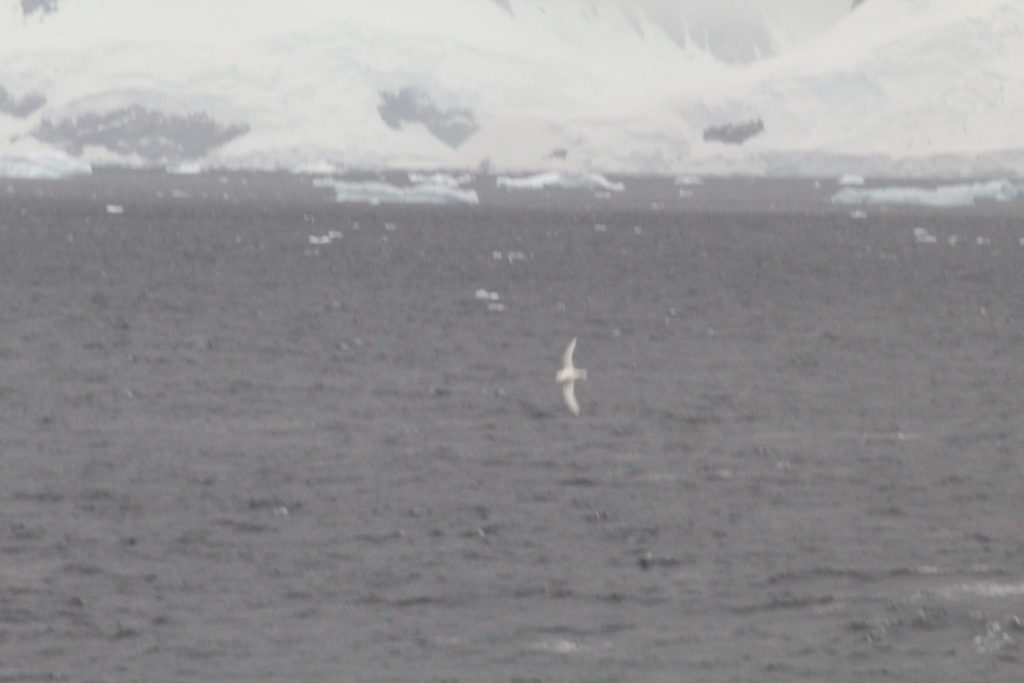
In the meantime “plan E for echo” was the call, and we climbed aboard the Zodiacs to make for Base Brown in Paradise Bay. This was our first time setting actual foot on the Antarctic continent (as opposed to landing on islands) so that alone made this a special landing for most passengers onboard. For some this marked the 7th continent!
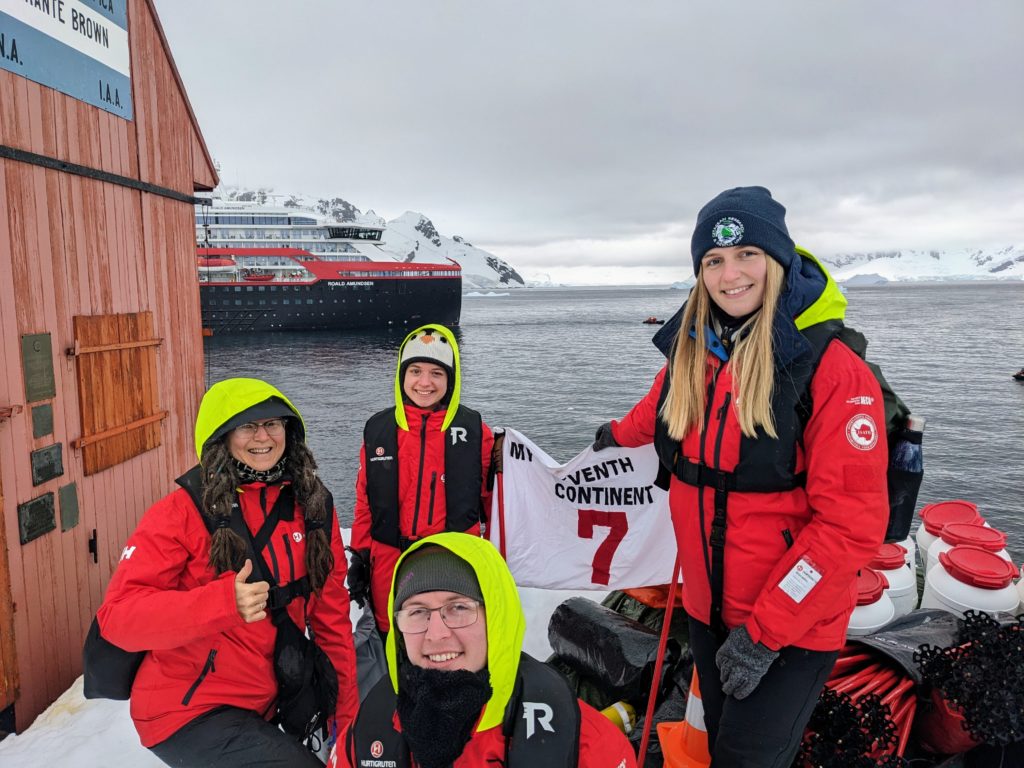
It seems like just about every site where people have lived on this continent has some story to it, and Base Brown is no exception. Formerly a permanent residence, the base has only seen use as an emergency shelter since the 1980s when a fire was started by the base doctor, when forced to stay beyond the end of his posting.
Today, the site mostly sees use by a colony of Gentoo penguins, which we were studying on our visit. The birds nest amongst the buildings just as easily as they do on the hillside. One notable individual had found a vantage point on a stack of bricks that may once have been part of a wall.

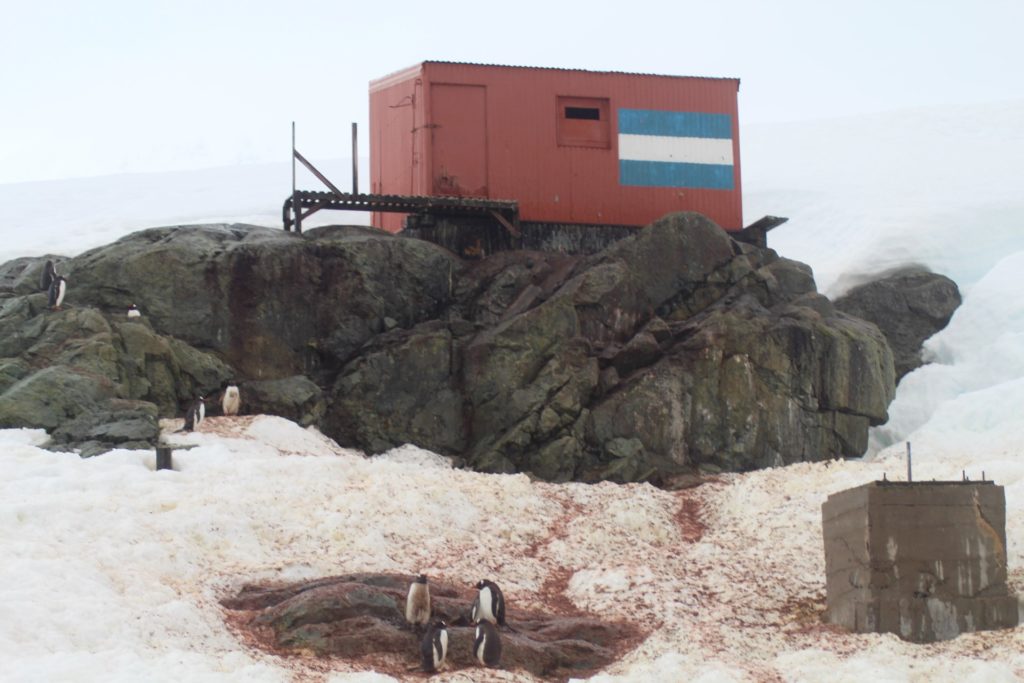
While most of the team were monitoring the penguins, a separate detachment were sent across the bay to collect sediment samples to test for microplastics. This was carried out in the shadow of three Weddell seals up on the ice. Another one was sighted in the bay near the penguins while waiting for the return Zodiac.
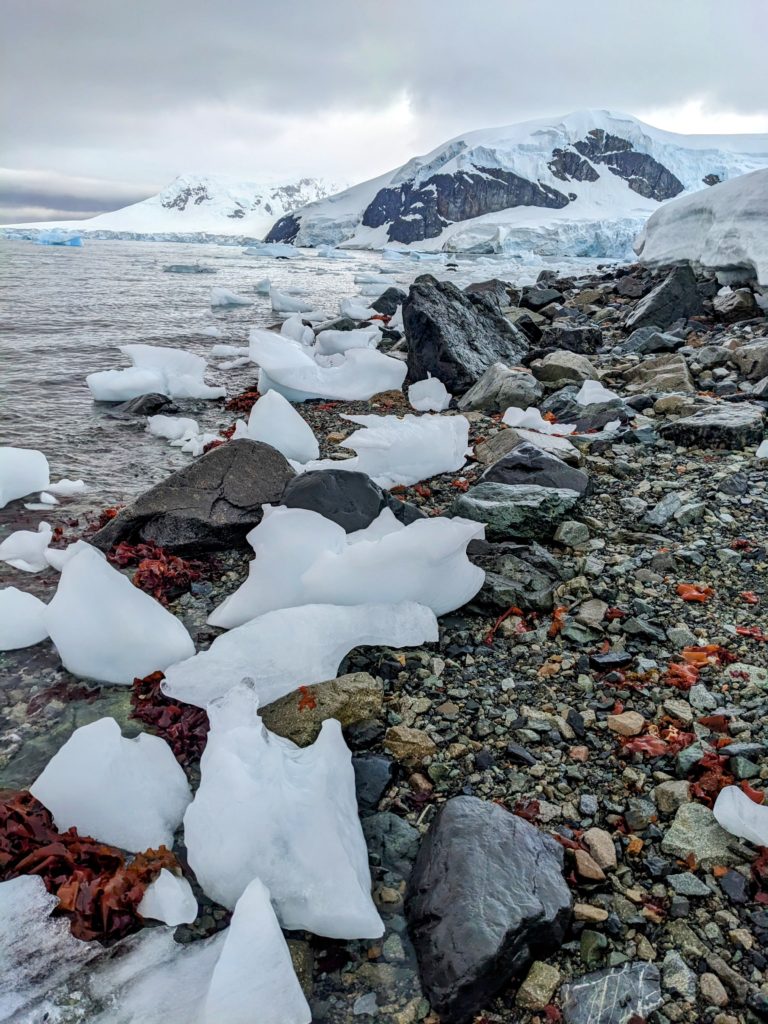
After the shuttle back to the ship it was a matter of dinner and data tending. While the numbers were being crunched and the sightings were being logged, the weather cleared. The fog that had obscured the horizon since morning and the accompanying wind and drizzle stopped.
The water became mirror-flat. Then the whales came out. From up on deck there wasn’t a direction you could turn without seeing the dorsal fin or blow of a humpback whale. Their blows echoed over miles of water. The minke whale didn’t announce itself so loudly. Without fanfare or drama, it simply appeared beside the ship, surfaced and vanished again just as quickly. In the span of a minute, only footprints in the water remained.
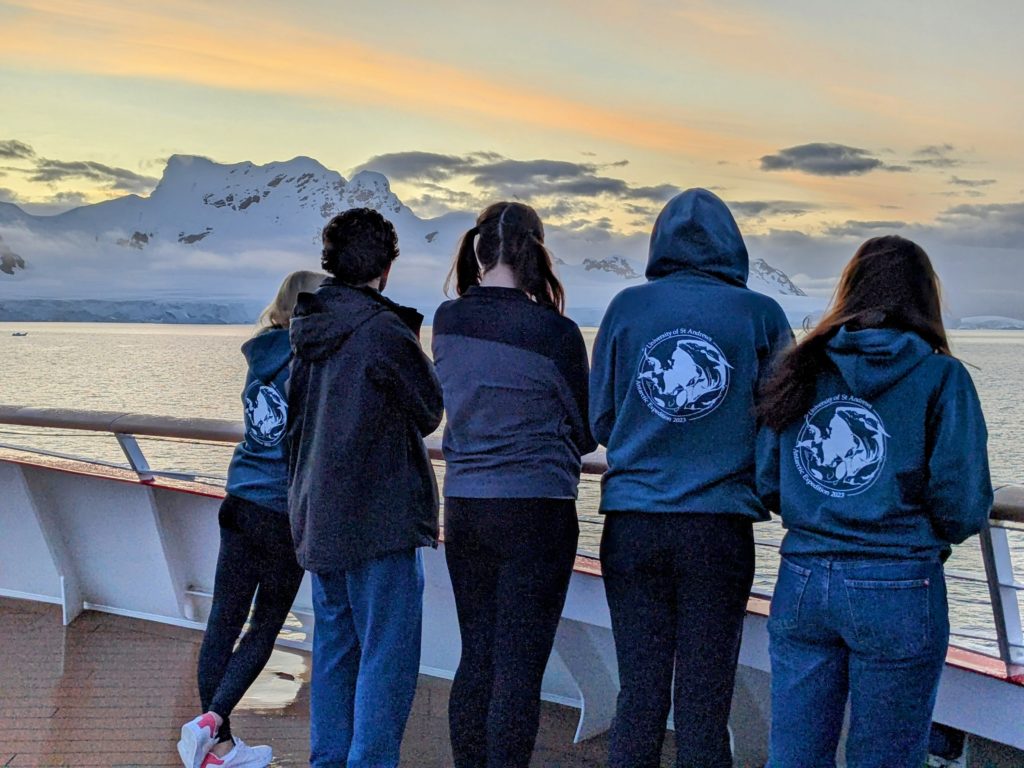
The humpback whales by this point had drawn closer to the stationary ship and started to feed. A midnight as bright as an evening in (northern hemisphere) June found us watching whale lunge after lunge from the upper decks, surrounded by a bellowing chorus. Pretty good for a plan E.

Written by Chris
